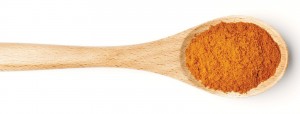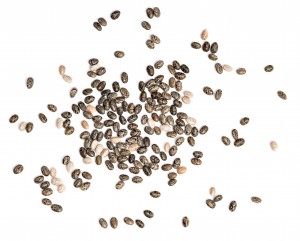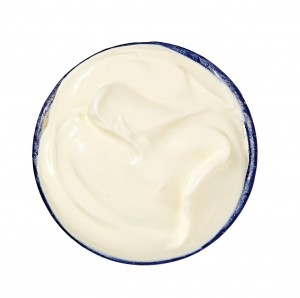“Superfood” describes a nutrient-dense food with numerous health benefits that can range from safeguarding against cell damage to the prevention of particular diseases. “There are specific foods containing important nutrients, including vitamins, minerals, fiber and polyphenols, and many naturally occurring plant compounds, including flavonoids, that are powerful enough to lower cholesterol and blood pressure and reduce your risk of certain cancers and chronic illnesses, such as heart disease and type 2 diabetes,” says Atlanta-based dietitian Jerlyn Jones, MS, RD. “These life-changing foods are labeled superfoods because of their positive impact on an individual’s health.”
But what exactly does this label say about the quantity of fiber, vitamins and other nutrients found in a food? What’s more, how does a superfood actually help the body stay or become healthy? Does one nutrient-rich food deserve more attention over another? Apples, for example, are nutrient-dense but aren’t considered a superfood and don’t get the same hype lavished onto kale, “the king of greens,” says Neka Pasquale, LAc, MS, a certified Chinese nutritionist and herbalist and founder of plant-based organic food company Urban Remedy.

Istock
“Kale is one of the healthiest vegetables on earth,” she continues. “It’s full of vitamins, minerals and antioxidants. Part of thebrassica family, kale has been shown to prevent certain cancers, support eye health and bone growth and lower inflammation.”
Nutritionist Susan Bowerman, MS, RD, director of worldwide nutrition education and training at Herbalife, agrees that kale “has a lot of antioxidants,” but she stresses that there are plenty of other leafy greens that offer a similar benefit. “Try mustard, turnip greens or Swiss chard, or stick with spinach,” she suggests.
Salmon has been on superfood lists for years because the cold-water fish is a rich source of essential omega-3 fatty acids (EPA and DHA), protein, potassium, selenium, vitamin D, vitamin B12 and other nutrients. “Salmon is a nutritional powerhouse that supports brain, bone, joint and heart health, to name a few,” says Pasquale, adding, “It’s very important to eat clean salmon that is either wild-caught Alaskan or sustainably farmed and fed its natural diet. Otherwise, there is a risk of heavy metal toxins from contaminated waters. Look for salmon approved by companies like CleanFish.com.” But wild-caught salmon is super expensive. To get the most benefit at an affordable price, Bowerman suggests eating canned salmon, which is wild-caught.

Istock
When blueberries made the superfoods list, they also became a high-demand fruit. “Blueberries have been touted as a superfood based primarily on their antioxidant capacity, which is measured in a test tube,” says Bowerman. “What isn’t known is how these high antioxidant values, called ORAC values, translate into benefits when they’re consumed. The assumption is that the higher the ORAC value, the better the food is for you, but many fruits and vegetables have similarly high antioxidant capacity. Blueberries are certainly healthy, but so are other berries and fruits in general.”
Here’s what the nutritionists say about other foods of this type. You’ll recognize many of them from their inclusion on superfoods lists in circulation at different times.

Istock
Green Tea
Pasquale: “Green tea is an amazing source of antioxidants andpolyphenols, which are powerful free-radical scavengers. Green tea also containsEGCG, acatechin [a kind of antioxidant], which research has shown to be more powerful than vitamin C and E. I recommend green tea for anti-aging, disease prevention and weight loss.”
Flaxseed
Jones: “Flaxseed offers plant-based omega-3 fatty acids as well as fiber and lignans (a.k.a. polyphenols). It’s a food source of protein, vitamin B6, folate, thiamin, phosphorous, potassium, iron, calcium and magnesium.”
Bowerman: “The fatty acid (ALA) in flaxseed is not the same as the fatty acids found in fish (EPA and DHA) and does not offer the same benefits as fish or fish oil.” (But it’s a good option for vegetarians and vegans.)

Istock
Turmeric
Jones: “Curcumin and other substances in turmeric may decrease inflammation, protect against certain cancers, reduce blood glucose and help prevent Alzheimer’s disease. Further research studies are needed to show conclusive results from these proposed health benefits.”
Bowerman: “You need to consume relatively large amounts of it, however, to get the benefit.”

Istock
Cacao/Raw Cacao Nibs
Jones: “Raw organic cacao nibs are less processed than chocolate and are an excellent source of fiber and iron and full of antioxidants and magnesium. Flavonols [phytochemical compounds] in cacao have been studied for years. These studies show flavonols help lower blood pressure, improve blood flow to the brain and heart and fight cell damage. A daily intake of 200 milligrams of raw cacao nibs can be a part of a healthy balanced diet. But be wary because chocolate is high in calories and can lead to weight gain.”
Pasquale: “Studies have shown that cacao’s benefits are only available in its raw form, and the addition of dairy may inhibit or block the absorption of the antioxidants. This means that you’re best off consuming cacao in the form of raw cacao powder, or dried nibs, and in recipes featuring other nourishing healing foods.”
Bowerman: “The benefits are attributed to the natural phytonutrients and heart-healthy polyphenols in cacao that offer antioxidant benefits. Many foods contain these compounds.”
Acai
This small South American fruit has high levels of antioxidants, called anthocyanins, known to help fight cancer and heart disease.
Jones: “[Health] claims leading to its superfood status have not been proved, and research about this fruit is very limited.”

Istock
Goji Berries
Pasquale: “This little berry packs a big punch and is considered a complete source of protein. It’s regarded as a top food that promotes longevity and builds strength. One of these tiny berries can contain up to 21 trace minerals, including zinc, iron, copper and calcium and 18 different amino acids. Ounce for ounce goji berries contain more vitamin C than oranges.”
Jones: “[It’s] not clear if goji berries are better than other types of berries in fruit or dietary supplement form. Evidence from studies is lacking, and the health claims are not substantiated. I recommend eating a variety of other affordable fruits found in your local supermarket.”
Bowerman: “Both acai and goji berries are considered superfoods because of their antioxidant capacity. But they can be very pricey, and you can get similar benefits from many other fruits. Enjoy them if you like the taste and can afford them.”
Manuka Honey
Jones: “Manuka honey has natural antibacterial qualities and contains methylglyoxal (MG), a compound that gives the food its antibiotic qualities. Manuka honey with therapeutic properties has to have a minimum rating of 10 Unique Manuka Factor, or UMF.”
Bowerman: “Honey is honey, and the source really makes no difference in terms of health benefits. Most people consume so little of it that whatever benefits it may offer would be minimal.”

Istock
Chia Seeds
Pasquale: “These tiny seeds are full of healthy omega-3 fatty acids and contain more omega-3s ounce for ounce than salmon. Omega-3s reduce inflammation and are vital for brain function. Chia seeds fill you up for sustained energy. You can add them to smoothies and all baked goods, or sprinkle them on cereal.”

Istock
Hemp Seeds
Pasquale: “Hemp seeds are one of the most nutrient-dense superfoods you can eat. Packed with complete protein, omega fats and magnesium, they contain 66 percent edestin—more than is found in any other plant. Three tablespoons of this easy-to-digest bioactive protein provide nearly half the daily value for magnesium, an essential mineral that’s vital to hundreds of biochemical processes.”
Bowerman: “Hemp seeds are a great source of plant protein, and they have a nice, nutty flavor. They do have a higher calorie cost than some other plant protein sources, due to their fat content, which is considerable. Other plant proteins, such as rice, pea, quinoa, oat and soy, are comparable in terms of their benefit to the body.”
Every year, the superfoods list expands. Next up are sprouted watermelon seeds, predict nutritionists. Sprouting entails stripping the seeds of their black shells and soaking them (methods vary), which stimulates germination (the process by which a planted seed grows a root and becomes a plant). But the experts agree that just like other so-called superfoods, this one item doesn’t provide everything folks require for their overall health and wellness.
As this long list shows, many foods contain nutrients needed to sustain our vim and vigor. The key is to eat a variety of healthy foods from different sources to meet the body’s needs.

Istock
What’s in a Name?
If a catchy word gets people to consume more produce, then use it to improve diets, say experts.
“I believe there’s a good reason to call produce superfoods. Eating colorful organic fruits and vegetables rich in antioxidants, vitamins and minerals is what your body needs to be healthy. Consuming processed foods that contain white flour, sugar and vegetable oils (such as soybean and canola), alcohol, and processed meats actually creates inflammation, the precursor to many diseases, such as stroke, type 2 diabetes and heart disease. The bottom line is superfoods are real foods.”
—Neka Pasquale, LAc, MS, founder, Urban Remedy
“Consume dark leafy vegetables such as spinach, Swiss chard, kale and arugula to get a variety of nutrients such as potassium, magnesium and flavonoids. A variety of fresh or frozen berries rich with vitamin C’s antioxidant protection can claim ‘superfood’ status regarding heart disease reduction. Don’t forget that nuts and seeds are also very good sources of potassium, magnesium and vitamin E for added antioxidant protection. Research strongly shows nuts play a role in cardiovascular disease reduction.”
—Jerlyn Jones, MS, RD, founder, The Lifestyle Dietitian
“The bottom line is this: Many foods have been called ‘superfoods’ because of the presence—often in high amounts—of a particular nutrient. I think it’s important to keep everything within the context of a healthy diet, a ‘superdiet,’ if you will. There are lots of everyday foods that are certainly superfoods in their own right, especially plant foods including fruits, vegetables, herbs, spices and roots.”
—Susan Bowerman, MS, RD, director, worldwide nutrition education and training, Herbalife







Comments
Comments